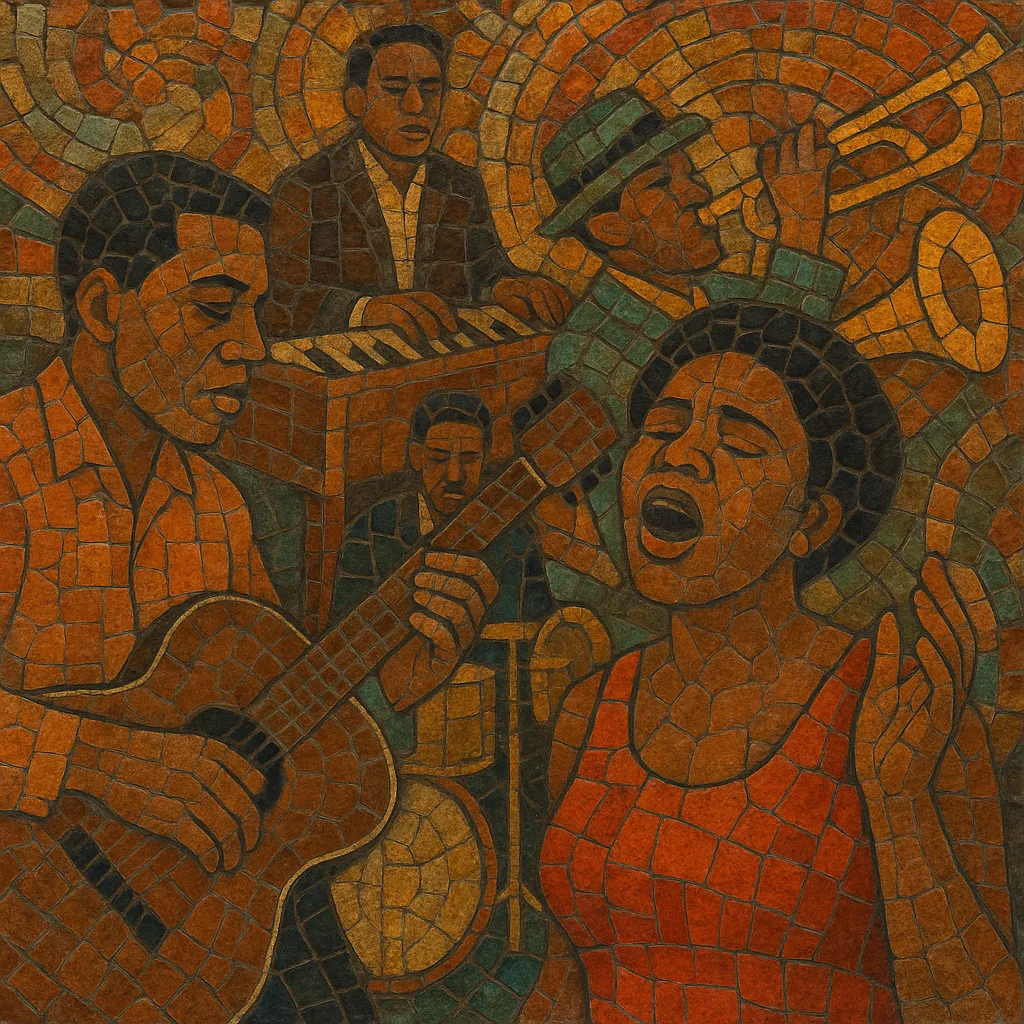
Southern soul is a regional style of 1960s soul music rooted in the U.S. South, centered on Memphis, Tennessee, and Muscle Shoals, Alabama. It blends the sanctified fervor of Black gospel with the grit of Southern rhythm & blues, blues, and the storytelling sensibility of country.
Compared with the smoother, pop-oriented Motown sound, Southern soul is rawer and more church-inflected: impassioned lead vocals, call-and-response backing, handclaps, Hammond organ swells, tight horn stabs, and a deep pocket rhythm section. Classic recordings were cut largely live in the studio by house bands like Booker T. & the M.G.'s and the Muscle Shoals Rhythm Section, capturing a warm, unvarnished groove.
Southern soul coalesced in the early 1960s around Southern studios and labels, notably Stax/Volt (Memphis, TN), Hi Records (Memphis), and FAME Studios (Muscle Shoals, AL). Built on Black church traditions, blues, and Southern R&B, the music emphasized live-in-the-room ensemble recording and gospel-charged vocals. House bands—Booker T. & the M.G.’s, The Mar-Keys, The Memphis Horns, and the Muscle Shoals Rhythm Section ("The Swampers")—forged a signature sound of in-the-pocket drums, economical guitar, earthy Hammond organ, and punchy brass.
Artists like Otis Redding, Sam & Dave, Wilson Pickett, Percy Sledge, and James Carr defined the style with records that balanced tenderness and grit. Producers and songwriters such as Jim Stewart and Estelle Axton (Stax), Rick Hall (FAME), Willie Mitchell (Hi Records), Steve Cropper, Isaac Hayes & David Porter, Dan Penn & Spooner Oldham shaped its repertoire and arrangements. Atlantic Records’ partnerships brought artists to Southern studios, spreading the sound nationally while the chitlin’ circuit anchored it regionally.
Into the 1970s, Southern soul diversified. Hi Records (with Willie Mitchell) refined a silkier yet still Southern feel for Al Green and Ann Peebles, bridging soul and creeping funk sensibilities. The ethos of Southern soul seeped into Southern rock, swamp rock, and soul blues, while disco and changing radio formats altered soul’s mainstream visibility.
Though less dominant on pop charts by the 1980s, Southern soul’s DNA persisted—in neo-soul, contemporary R&B balladry, and the aesthetics of authentic, live-band recording. Periodic revivals, reissues, and documentaries re-centered its cultural importance. Its influence remains audible any time a soul record favors gospel-forward vocals, horn-driven arrangements, and a warm, lived-in groove.

